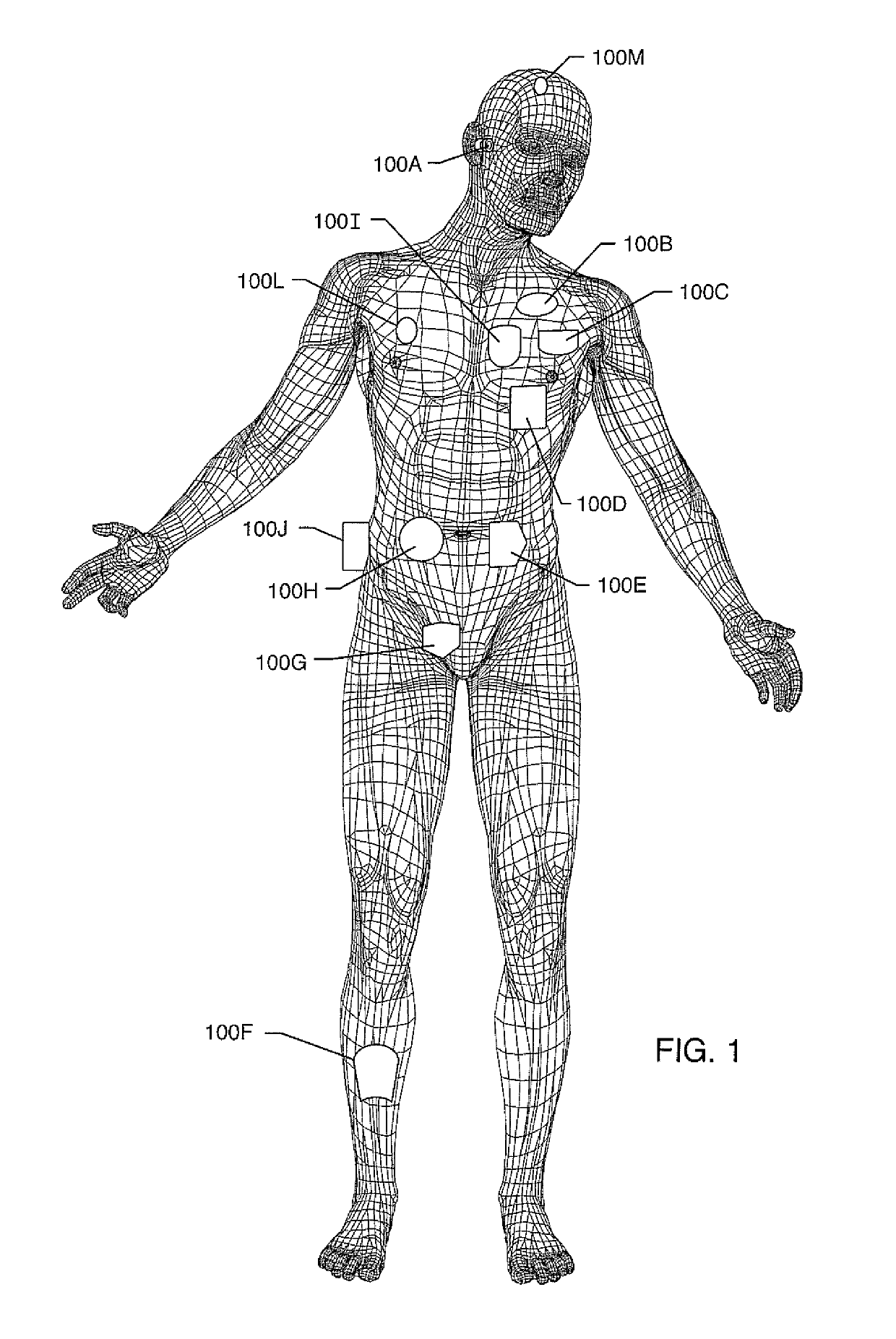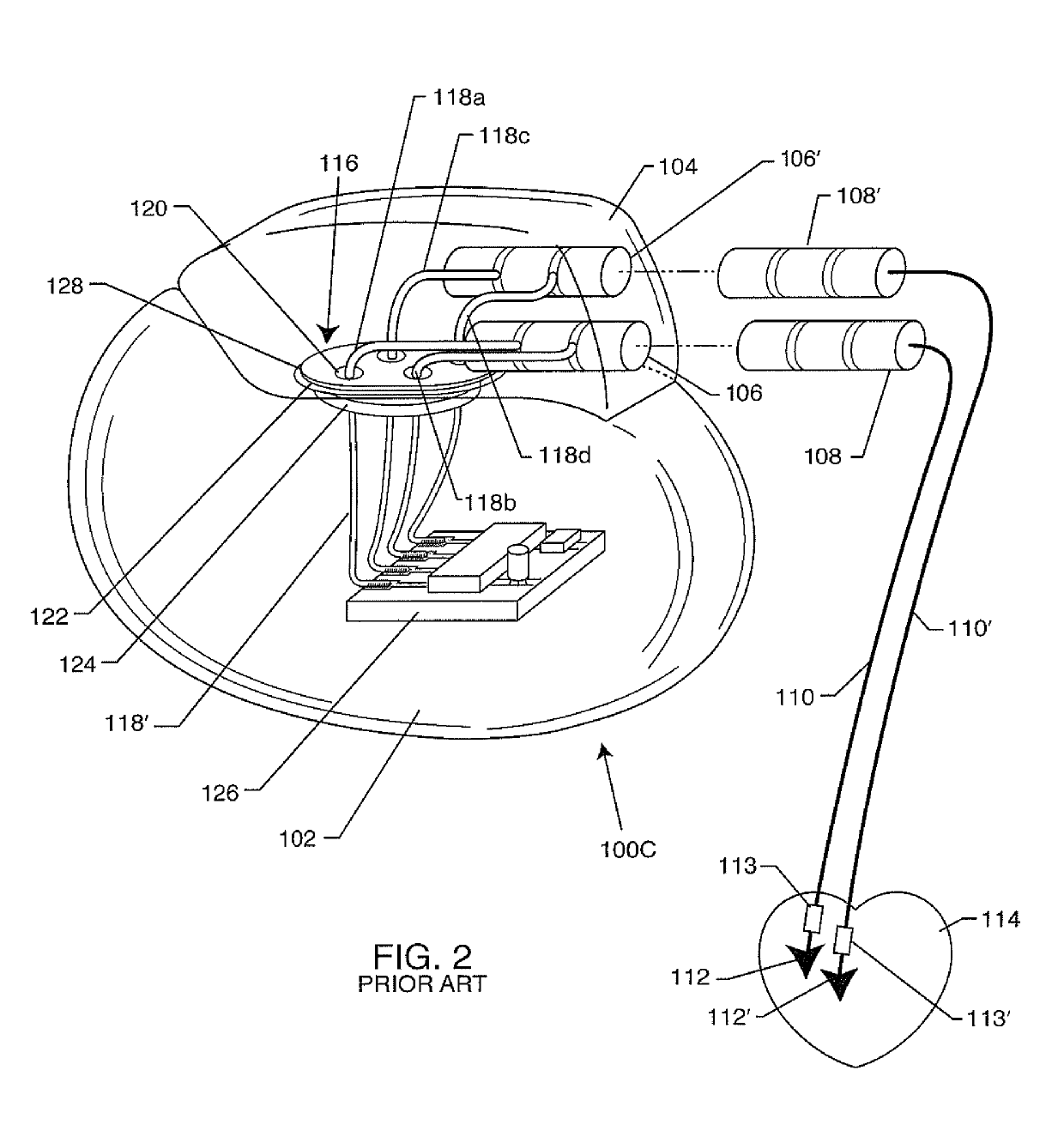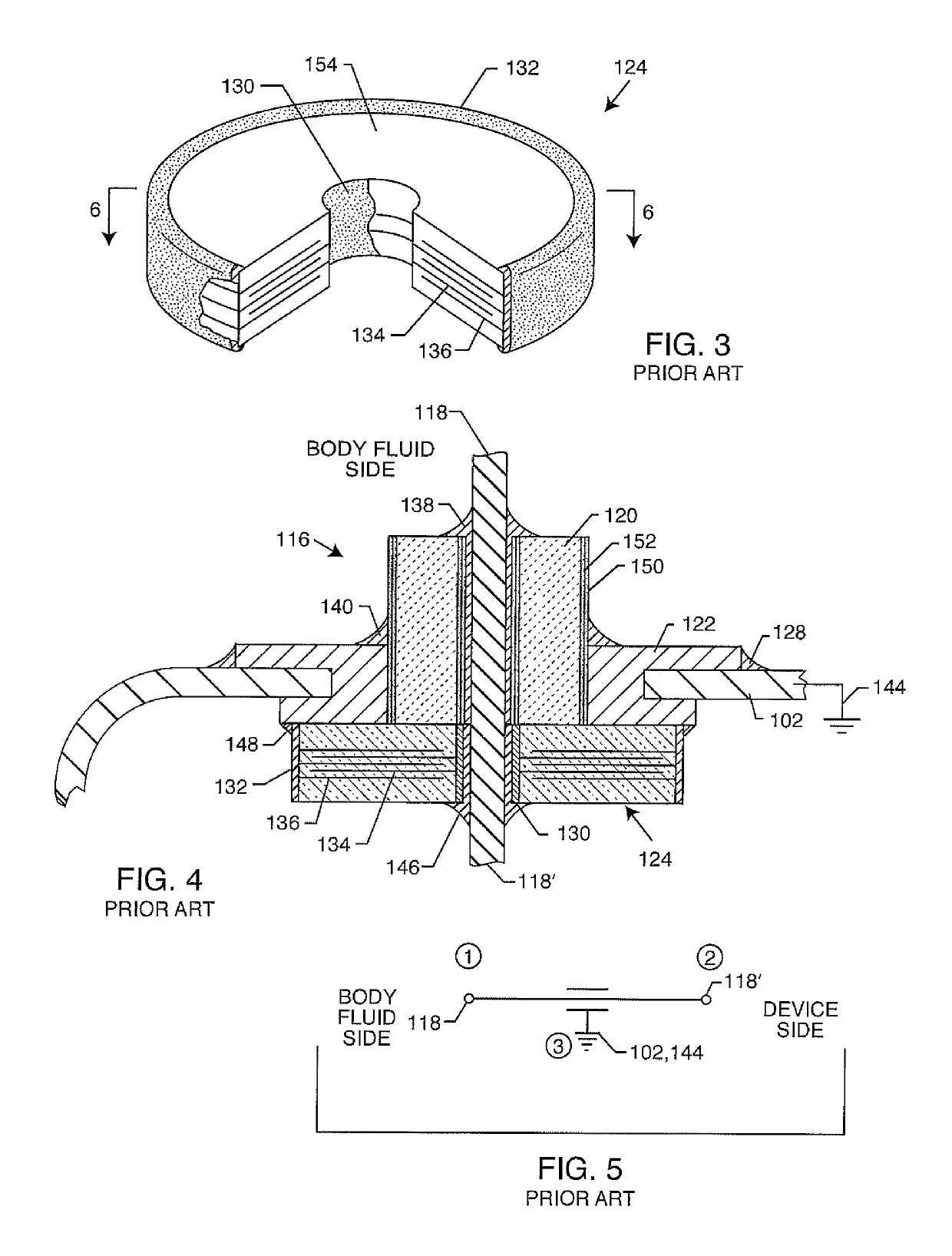Process for manufacturing a leadless feedthrough for an active implantable medical device
a technology of lead-free feedthrough and implantable medical devices, which is applied in the direction of manufacturing tools, soldering apparatus, therapy, etc., can solve the problems of reducing current carrying capacity and prior art failure to explain hermetic feedthroughs, and achieves small conductive pathways/vias, reduces residual stress, and enhances structural stability of pressed powder
- Summary
- Abstract
- Description
- Claims
- Application Information
AI Technical Summary
Benefits of technology
Problems solved by technology
Method used
Image
Examples
Embodiment Construction
[0281]As previously described in-whole or in-part within U.S. provisional applications 62 / 443,011, 62 / 450,187, 62 / 461,872, 62 / 552,363 and 62 / 613,500 filed Jan. 6, 2017, Jan. 25, 2017, Feb. 22, 2017, Aug. 30, 2017 and Jan. 4, 2018 respectively, the present invention now includes various embodiments of different options. The following detailed description is now for 110 sheets of drawings, which are labeled FIG. 1 through FIG. 176. Certain FIGURES illustrate one option while other FIGURES illustrate another option. Some FIGURES illustrate several options in just one figure. It will be understood that any of the FIGURES that describe the present invention are applicable to any of the options. In other words, the FIGURES illustrate a variety of ways in which the various options can be reduced to practice.
[0282]FIG. 1 illustrates various types of active implantable and external medical devices 100 that are currently in use. FIG. 1 is a wire formed diagram of a generic human body showing ...
PUM
 Login to View More
Login to View More Abstract
Description
Claims
Application Information
 Login to View More
Login to View More - R&D
- Intellectual Property
- Life Sciences
- Materials
- Tech Scout
- Unparalleled Data Quality
- Higher Quality Content
- 60% Fewer Hallucinations
Browse by: Latest US Patents, China's latest patents, Technical Efficacy Thesaurus, Application Domain, Technology Topic, Popular Technical Reports.
© 2025 PatSnap. All rights reserved.Legal|Privacy policy|Modern Slavery Act Transparency Statement|Sitemap|About US| Contact US: help@patsnap.com



